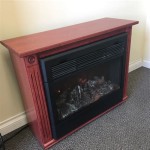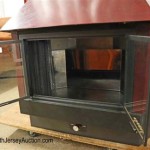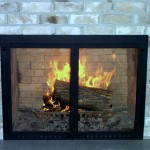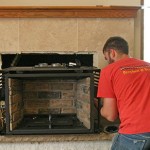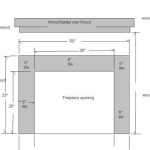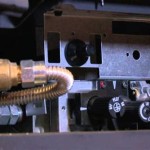Putting Stone On Fireplace: A Comprehensive Guide
Fireplaces have long served as focal points in homes, providing warmth, ambiance, and aesthetic appeal. One popular method of enhancing a fireplace's visual impact involves the application of stone. "Putting stone on fireplace" is a versatile and customizable way to transform a dated or lackluster fireplace into a stunning architectural feature. This article explores the various aspects of this process, including material selection, preparation, installation techniques, and considerations for safety and maintenance.
Choosing the Right Stone for Your Fireplace
The selection of stone is a crucial initial step that dictates the overall look and feel of the finished fireplace. Several factors must be considered, including the style of the home, the desired aesthetic, and the practical properties of the stone itself. Different types of stone offer unique characteristics in terms of color, texture, durability, and heat resistance.
Natural Stone Varieties: Natural stone encompasses a wide range of options, each with its distinct advantages. Limestone, for example, is known for its neutral tones and versatility, lending itself well to both traditional and modern designs. Granite is renowned for its exceptional durability and resistance to heat, making it a robust choice for fireplaces that will be frequently used. Slate offers a sleek, contemporary look with its dark hues and smooth texture. Fieldstone, with its irregular shapes and rustic charm, provides a more organic and natural aesthetic.
Manufactured Stone Veneer: Manufactured stone veneer, often referred to as cultured stone, is a lightweight alternative to natural stone. It is made from a mixture of cement, aggregates, and pigments, molded to replicate the appearance of natural stone. This option offers several advantages, including lower cost, easier installation due to its lighter weight, and a wider range of color and style options. However, it's crucial to select a high-quality manufactured stone veneer that is specifically designed for fireplace applications to ensure its heat resistance and durability.
Beyond the type of stone, considerations should be given to the size and shape of the individual stones. Larger stones can create a more dramatic effect, while smaller stones may lend a more intricate and detailed appearance. The overall thickness of the stone is also an important factor, as it impacts the weight of the final installation and the amount of space it will occupy.
Preparation is Paramount: Ensuring a Solid Foundation
Proper preparation is critical to the success of any stone fireplace project. A well-prepared surface ensures that the stone adheres properly and that the finished installation is structurally sound and aesthetically pleasing. This phase involves several key steps, including cleaning, surface preparation, and the application of a suitable bonding agent.
Cleaning and Surface Preparation: The existing fireplace surface must be thoroughly cleaned to remove any dirt, dust, grease, or loose paint. A wire brush and a detergent solution can be used to scrub the surface. In some cases, it may be necessary to use a mild acid wash to remove stubborn stains or efflorescence. Once the surface is clean, it should be rinsed thoroughly with water and allowed to dry completely.
Applying a Scratch Coat: A scratch coat, also known as a mortar bed, provides a textured surface for the stone to adhere to. This is typically a mixture of Portland cement, sand, and water, applied to the prepared surface with a trowel. The scratch coat should be scored horizontally to create grooves that will further enhance the bond with the stone. It's crucial to allow the scratch coat to cure for at least 24 to 48 hours before proceeding with the stone installation.
Using a Bonding Agent: A bonding agent, such as a latex-modified mortar, is often recommended to improve the adhesion between the scratch coat and the stone. This type of mortar provides a stronger bond and helps to prevent the stone from separating from the surface over time. The bonding agent should be applied according to the manufacturer's instructions, ensuring that it is evenly distributed across the surface.
For fireplaces with non-combustible surfaces (such as brick or concrete), a direct application of mortar to the cleaned surface may suffice. However, for combustible surfaces (such as wood), additional measures are necessary. This typically involves installing a layer of cement board as a fire-resistant substrate. The cement board should be securely fastened to the wood framing with screws and then treated with a scratch coat and bonding agent before applying the stone.
Installation Techniques: Achieving a Professional Finish
The installation process requires careful planning, precision, and attention to detail. The goal is to create a seamless and visually appealing finish that enhances the fireplace's aesthetic and complements the surrounding décor. Proper mortar application, stone placement, and joint finishing are essential for achieving a professional result.
Mortar Application: The mortar should be mixed according to the manufacturer's instructions, paying close attention to the water-to-cement ratio. The consistency should be similar to that of peanut butter, allowing it to hold its shape without being too runny. The mortar should be applied to the back of each stone with a trowel, ensuring that it is evenly distributed and covers the entire surface. The amount of mortar should be sufficient to create a strong bond but not so much that it oozes out excessively when the stone is pressed into place.
Stone Placement: When placing the stones, it's important to start at the bottom and work upward. This helps to ensure that the weight of the stones is evenly distributed and that the lower stones are properly supported. The stones should be pressed firmly into the mortar bed, using a slight twisting motion to ensure good contact. A level should be used to check that the stones are aligned properly, and any adjustments should be made immediately. Consider dry-laying the stones first to determine the pattern and arrangement before applying mortar. This allows for visualization and adjustments before the permanent installation begins.
Joint Finishing: Once the stones have been installed, the mortar joints should be finished to create a clean and professional look. There are several different joint finishing techniques, including raked joints, flush joints, and grapevine joints. The choice of joint finish depends on the desired aesthetic and the type of stone being used. Raked joints are created by removing some of the mortar from the surface of the joint, creating a recessed look. Flush joints involve filling the joint completely with mortar and then smoothing it flush with the surface of the stone. Grapevine joints are created by tooling the mortar to resemble the appearance of a grapevine. Excess mortar should be removed from the stone surfaces using a damp sponge before it hardens. This helps to prevent staining and makes the cleaning process easier.
Safety and Maintenance Considerations
Safety is paramount when working with fireplaces, and proper maintenance is essential for ensuring their longevity and optimal performance. These aspects encompass fire safety measures, ventilation considerations, and regular cleaning practices.
Fire Safety: It is imperative to adhere to all local building codes and regulations regarding fireplace installations. This includes maintaining proper clearances between the fireplace and any combustible materials, such as wood framing or furniture. A non-combustible hearth extension should be provided in front of the fireplace to protect the floor from sparks and embers. The chimney should be inspected regularly by a professional to ensure that it is clean and free of obstructions. A properly functioning chimney is essential for venting smoke and combustion gases safely out of the home. The damper should be in good working order, allowing for proper control of airflow. Smoke detectors and carbon monoxide detectors should be installed in the home and tested regularly to provide early warning of potential hazards.
Ventilation: Adequate ventilation is crucial for safe and efficient fireplace operation. A fireplace requires a sufficient supply of air to support combustion. If the room is too tightly sealed, the fireplace may draw air from other sources, such as the furnace or water heater, which can lead to carbon monoxide buildup. An outside air vent can be installed to provide a dedicated source of combustion air. This helps to prevent backdrafting and ensures that the fireplace operates safely and efficiently.
Cleaning and Maintenance: Regular cleaning and maintenance are essential for preserving the appearance and functionality of the stone fireplace. The stone surface should be cleaned periodically with a mild detergent solution and a soft brush. Avoid using harsh chemicals or abrasive cleaners, as these can damage the stone. The mortar joints should be inspected regularly for cracks or damage, and any necessary repairs should be made promptly. The chimney should be cleaned annually by a professional to remove creosote buildup, which is a highly flammable substance that can pose a fire hazard.
By carefully considering these factors, homeowners can successfully enhance their fireplaces with stone, creating a beautiful and functional focal point that will be enjoyed for years to come.

Thin Stone Veneers Make A Fireplace Update Easy Swenson Granite 100 Natural Stones
.jpg?strip=all)
Tips And Tools For Professional Stacked Stone Fireplaces

Learn How To Install Stone Veneer On Walls Fireplace More Remodel Wall

Eldorado Stone Fireplace Installation With Mantel Time Lapse Installing Veneer
Installing Stone Veneer On Wall With Fireplace Hearth Com Forums Home

Can I Install Stone Veneer Around My Gas Fireplace Stoneyard

12 Stacked Stone Fireplace Ideas For Optimal Coziness

Fireplace Mantel Installation Before And After

Diy Interior Stone Fireplace Selex

See How I Made Over An Ugly Clunky Stone Veneer Fireplace With Paint
Related Posts

